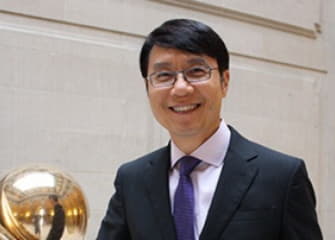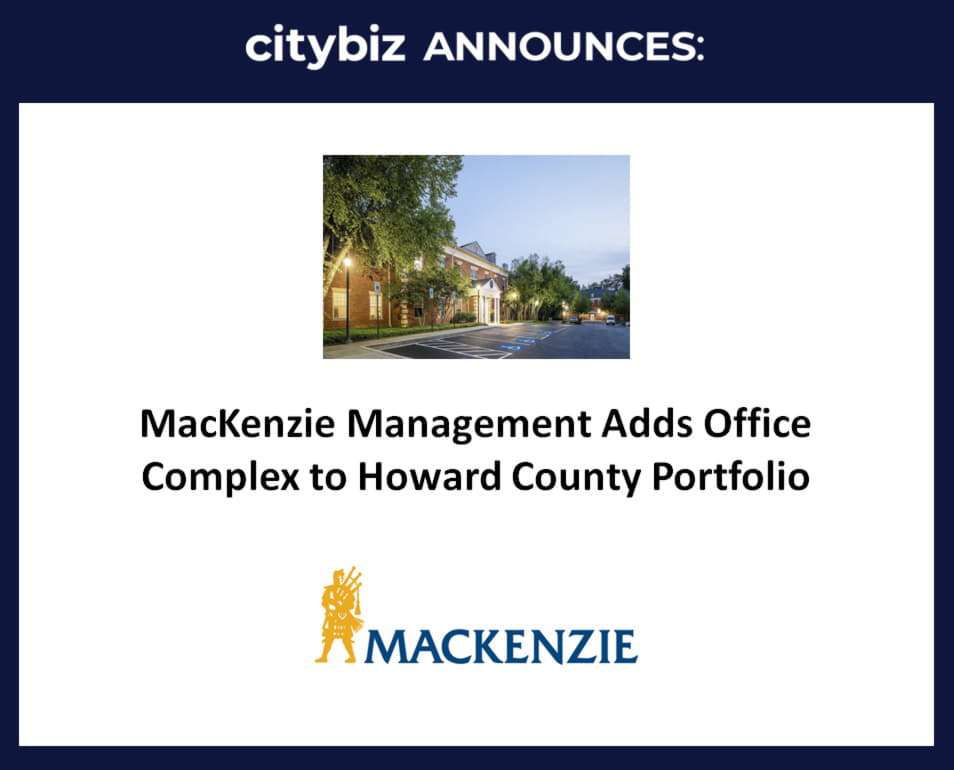
Samuel Hoi
Click here for Part I & Part III
Though he says it was a matter of happenstance that he stumbled upon arts college management while studying illustration at Parsons School of Design, MICA President Samuel Hoi admits it was the “bliss” he’d been looking for after an unfulfilling law school experience.
Since arriving at MICA in 2014, Hoi has been intent on building upon the legacy of his predecessor Fred Lazarus, with a focus on pivoting the College into new areas of art and design that will meet the challenges and standards of the emerging creative economy.
Among those initiatives, Hoi has overseen the MICA’s curricular expansion into new programs such as Game Design and Product Design. Both B.F.A. programs launched this September, and will be housed, along with Architectural Design and Interactive Arts, in the new state-of-the-art Dolphin Design Center, a building that Hoi believes will be a hub of innovative design practice for the 21st century.
“MICA’s mission is to empower our students to forge creative, purposeful lives and careers in a diverse and changing world. We believe that creatives can and should play an active role in being change agentsin the world for the common good,” said Hoi.
But, MICA’s goals are not limited to its own success. The recently announced Baltimore Creatives Acceleration Network (B/CAN) is an initiative spearheaded by MICAto provide a network of support and professional resources for Baltimore’s community of creatives and entrepreneurs interested in starting their own businesses.
“We want to stimulate the creative economy in Baltimore in such a way that the city is for the better, and that it’s not only pervasive and powerful but truly equitable at the same time.”
As MICA closes in on its bicentennial in 2026, Hoi is committed to the College’s decisionto further incorporate entrepreneurship into its teachings, and to reinvent theart and design schoolmodel in a way that students will not only benefit but thrivein the creative economy.
“At MICA, we are educating a new breed of wide-angle, wide-impact artists and designers, who will use their art and design thinking to make a much broader impact in a whole host of other disciplines and areas than just the traditional arenas of galleries and design studios,” said Hoi.
Founded in 1826, Maryland Institute College of Art (MICA) is the oldest continuously degree-granting college of art and design in the nation. The College enrolls over 3,000 undergraduate, graduate and continuing studies students from 49 states and 65 countries in fine arts, design, electronic media, art education, liberal arts, and professional studies degree and non-credit programs. With art and design programs ranked in the top ten by U.S. News and World Report, MICA is pioneering interdisciplinary approaches to innovation, research, and community and social engagement. Alumni and programming reach around the globe, even as MICA remains a cultural cornerstone in the Baltimore/Washington region, hosting hundreds of exhibitions and events annually by students, faculty and other established artists.
EDWIN WARFIELD: Let’s talk about some of the milestones. You’ve been here for three years?
SAMUEL HOI: Yes. It’s been a very successful transition from a legendary 36-year presidency into a new presidency. I knew Fred for over 24 years by the time that I joined MICA three years ago, and so that relationship allowed for mutual knowledge of each other. I think he was watching and was interested in my work, and I have always admired what he has done in MICA and what he has accomplished for the city. I think our friendship and the mutual appreciation made it much more comfortable for this transition. The campus community knew that it was a friendly relationship. I think Fred approved of my succeeding him, and also in the city, I think Fred certainly has been wonderful in opening doors and introduced me to people when I first came. That’s been a fantastic friendship and a cultural relationship.
As far as MICA, I was actually at a very happy place with my previous college and also with Los Angeles, so I wasn’t really looking to move, but eventually I was convinced to join the search because I realized that Baltimore and MICA represent a very special opportunity. If I could figure out how MICA could evolve—it was already at an extremely good place because of Fred—but to continue to evolve to be one of the transformative 21st century art and design education, being in a way that a college hasn’t really imagined itself to be before. Also, the city is such a special environment that I think we could make a difference in the city that maybe other art schools could not make in their different kind of city contexts. Once I figured that out—that, “oh, this is actually a wonderful place to come”—during the presidential search I was very frank with the board of trustees to say that I came for MICA and also came for the city of Baltimore. Now, fortunately because the MICA board is so invested in the city, they were very happy to hear that.
Q. Walk us through some of the major milestones for you and MICA.
A. Three years is a very short time—it’s just the beginning. In that context I can name a few new initiatives are that we have launched: two new programs that are very exciting. These new programs are game design and product design, which will actually be fully launched this September, 2017. We launched a MICApreneurship Program, which we can talk about later on, that really begins to answer the return on investment question, I think, in a very appropriate way for students who come to MICA. We also are launching a citywide project called the Baltimore Creatives Acceleration Network—the better acronym is BCAN.
Q. So, the game design and product design program—give us a little bit of the history of game design. Has that been a major?
A. Game design has a wonderful history at MICA. It has been a minor at MICA as part of the interactive arts department. We always have a game arts concentration. That’s been around for some time. There’s been conversation at the college about, ultimately, moving that possibly into major, but again that conversation went on for a long time. When I came in as a new president, I said, “Let’s make it work, let’s make it happen.” It got jumpstarted into exploration. In an academic environment, once you have an idea about a program, you have to get faculty approval, you build a curriculum, then you go the states and go to the national accreditation body to do the accreditation. Long and short is that the minimum time to launch a program is about two years, so we moved as fast as we could. I came here in the first year, really jumpstarted the initiative, and now by the end of third year, we are launching the program, so by academic standards, it was very, very fast.
The other program I also helped jumpstart in MICA is product design. These two programs were chosen for strategic reasons. They are programs that are very adjacent to and synergistic with the whole host of other majors at MICA. For example, game design tapped interactive arts, its home department originally. It tapped into animation, film and video, graphic design, and also art education, because while we will address the entertainment needs, games nowadays have much broader application than entertainment. The product design that we are launching is one of very, very, very few product design [programs] that have launched in the 21st century. Most of the other product design programs, no matter how well recognized they are in the country, tend to have been born in the ‘50s and ‘60s as a result of the Sputnik competition for scientific innovations at that time, and every single program is characterized by its birth time. We believe that our program, because it’s born now, is going to be the most liberated in terms of what it could be. So, again, rather than addressing traditional machinery, our product design program is going to be relooking at how devices and services and the evolving time are going to come together. Both our game design and product design will position MICA to be partnering organizations with the whole host of institutions, and I think we can bring our core expertise of creativity to stimulate a new kind of innovation in the city.
Sponsored by:
Founded in 1969, KatzAbosch is one of the largest CPA and business consulting services in the Mid-Atlantic region. Our mission is to provide the highest quality accounting, tax, financial and management consulting services to our clients. We understand the needs and challenges of our clients and we have made it our obligation to create, grow and protect asset value. The experts at KatzAbosch offer a full service solution while maintaining a tradition of ethics and incorporating the latest technology and unique business practices. Excellence in an industry often begins with how those closest to the company—its clients and employees—feel about it. For these individuals, KatzAbosch is a place where people and businesses excel and prosper. Our advisors can meet all of your service needs including; Audit & Accounting, Business Valuation & Litigation Support, Consulting, Estate Planning & Administration, Financial Institution Services, Forensic Accounting & Fraud Examinations, State and Local Tax (SALT), Taxes & Planning.


Edwin Warfield, CEO of citybizlist, conducts the CEO Interviews.
If you're interested in reaching CEOs, please contact edwin.warfield@citybuzz.co
Connect on LinkedIn




































